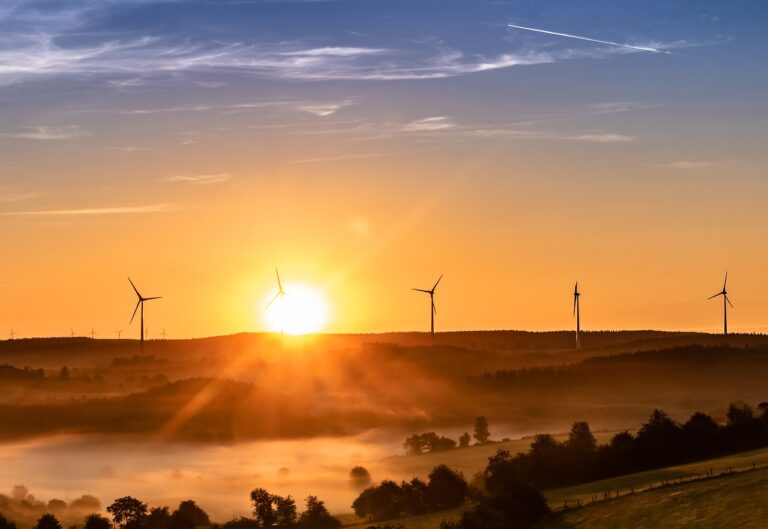Energy that is produced using renewable resources won’t run out. It is organic, self-renewing, and often leave no or very little carbon imprint.
Wind, sunlight, bioenergy, and hydroelectricity, including tidal energy, are a few examples of clean and renewable energy sources.
Table of Contents
The top leading countries for renewable energy
Here are the list of the leading countries for renewable energy. These 10 countries made significant changes in their approach to sustainability in energy sources and supplies in the past years. In fact, they have achieved great steps forward in the direction of the green transition.
1. The Netherlands
The Netherlands declared in 2022 that it would raise its 2030 offshore wind target to 21 GW. That would provide over 75% of the nation’s electrical requirements. By doing this, offshore wind energy significantly aids in meeting the revised climate objective of 55% fewer CO2 emissions.
2. Spain
Solar photovoltaic energy generation, which registered a 40% increase in the first five months of 2022 compared to the same months of the previous year, is the most notable statistic for Spain’s electricity generation. This increase was made possible by the new 3.1 GW of this technology installed. This represents a capacity growth of 25%.
Spain has set a high standard that by 2030, it must produce 42% of its energy from renewable sources.
3. Japan
Japan said that it would reduce its carbon emissions in accordance with the Paris Agreement by 26.3% by 2030 and 80% by 2050 compared to 2013.
As of 2022, certain biomass power projects for the FIP system, offshore wind projects, onshore wind power projects (250kW to below 1MW for the FIT system, 50kW or larger; replacement projects are excluded), solar PV projects (1MW or larger) for the FIP system, and solar PV projects (250kW to above 1MW for the FIP system) are subject to a tendering process.
4. India
According to a recent report, India is unlikely to meet its goal of boosting renewable energy output capacity by 175 gigawatts by December 2022 at its current rate. Four sizable states will be the main cause of the gap.
The rapid growth of the solar sector in India is making it difficult for the country’s wind industry to keep up. It seems unlikely that it will achieve its goal of installing 60 GW by 2022. Although, things are looking good. In the last 7.5 years, renewable energy capacity has increased by 286%, to more than 151.4 GW, which is encouraging.
5. Australia
In 2021, the Australian renewable energy sector contributed 32.5% of the nation’s total electricity production. This is an increase of over 5% from the previous year. Small-scale solar once more played a key role in Australia’s expansion of renewable energy in 2021. The industry increased its installed capacity by 3.3 GW throughout the course of the year, setting a record for the fifth consecutive year. In 2021, small-scale solar generated 24.9% of all Australian renewable energy, confirming its position as the country’s second-largest clean energy technology after wind.
6. France
France announces €5 billion ($5.3 billion) in expenditure for the decarbonization of heavy industry in addition to setting ambitious 2050 renewable energy targets, including plans for 100 GW of solar and 40 GW of offshore wind.
By 2025, France wants to cut its proportion of nuclear power output in half compared to 2015 levels. By 2030, the nation also wants to expand its use of renewable energy to 32%.
7. Germany
Germany’s electricity was produced by renewable sources for nearly half (49%) in the first six months of 2022.
Germany has accelerated its aim of using entirely green energy by 15 years, to 2035, and set an 80% by 2030 target to improve energy security. Germany happens to be a country that values solar energy, until 2014 It had the biggest PV installed capacity in the world and will have over 58GW soon.
8. United Kingdom
Total output reached 27.4 million tonnes of oil equivalent in the second quarter of 2022, a 21% increase over the same period in 2021. The impact of extensive maintenance on the North Sea, particularly the closure of the Forties Pipeline System in the summer of 2021, which significantly decreased oil and gas output, is the primary cause of the increase.
9. China
China is stepping up its production of renewable energy. By the end of 2022, the country will have put up record-breaking amounts of solar panels and wind turbines, reaching 156 gigawatts (GW). According to Bloomberg, China added over 35 gigawatts of wind and solar capacity in the first half of 2022, surpassing the previous peak set in 2021 by 25%. More is predicted as governmental organizations and the private sector try to achieve annual goals.
10. United States of America
The Energy Information Administration (EIA) predicted that 22% of US power output would come from renewable sources by 2022. As of mid-year, renewables have already supplied 25.23 percent of all US electrical generation.
The amount of electricity generated by wind climbed by 24.67% over the six months ending June 30 and accounted for 11.55% of all electrical generation. Solar energy sources, meanwhile, increased by 27.72% and contributed 4.94% to US electrical output. Also, coal and nuclear power were outperformed by renewable energy sources by nearly 39% and above 28%, respectively.












